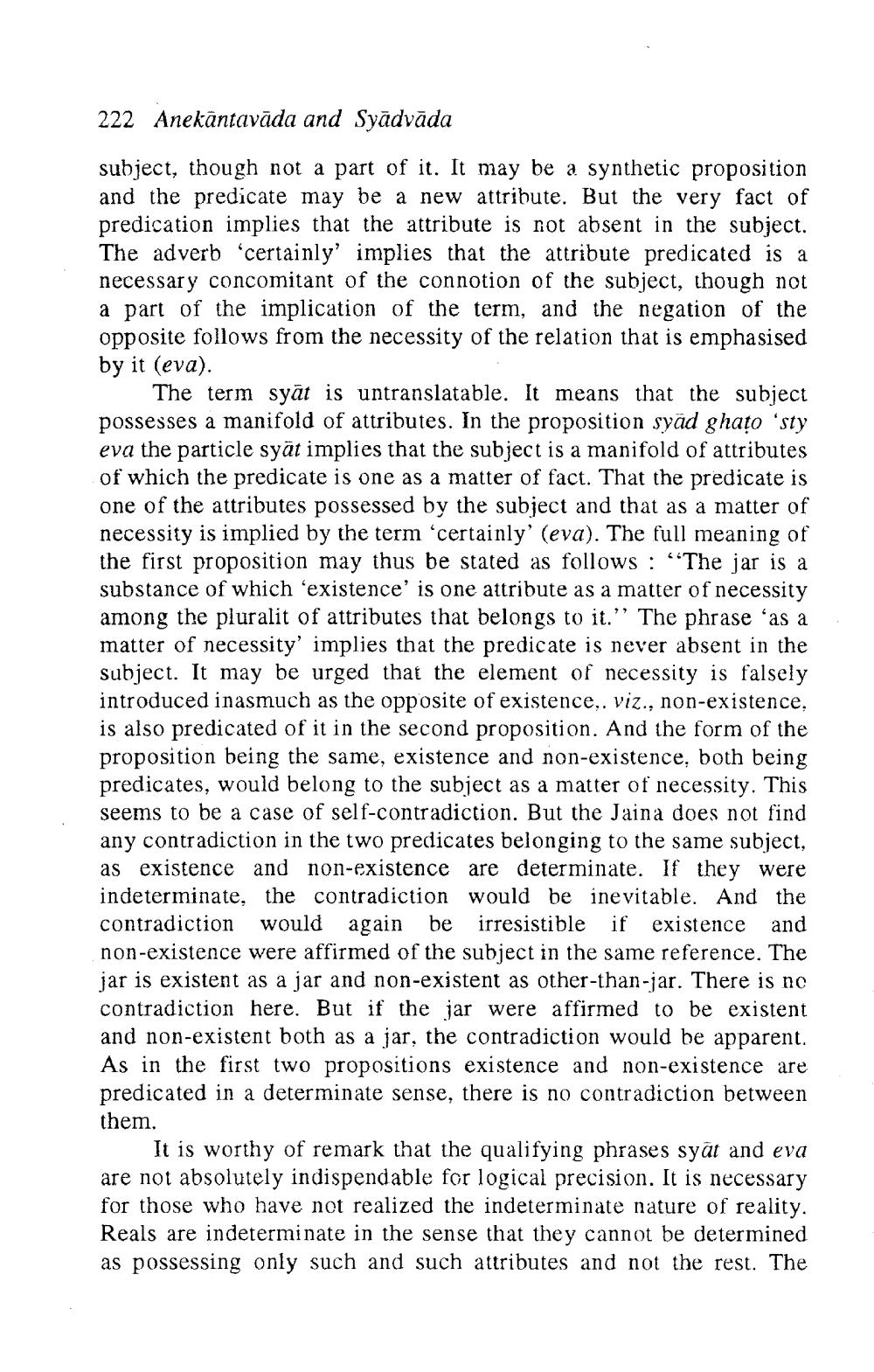________________
222 Anekāntavāda and Syādvāda
subject, though not a part of it. It may be a synthetic proposition and the predicate may be a new attribute. But the very fact of predication implies that the attribute is not absent in the subject. The adverb 'certainly' implies that the attribute predicated is a necessary concomitant of the connotion of the subject, though not a part of the implication of the term, and the negation of the opposite follows from the necessity of the relation that is emphasised by it (eva).
The term syāt is untranslatable. It means that the subject possesses a manifold of attributes. In the proposition syad ghato 'sty eva the particle syāt implies that the subject is a manifold of attributes of which the predicate is one as a matter of fact. That the predicate is one of the attributes possessed by the subject and that as a matter of necessity is implied by the term 'certainly' (eva). The full meaning of the first proposition may thus be stated as follows: "The jar is a substance of which 'existence' is one attribute as a matter of necessity among the pluralit of attributes that belongs to it. The phrase "as a matter of necessity' implies that the predicate is never absent in the subject. It may be urged that the element of necessity is falsely introduced inasmuch as the opposite of existence, viz., non-existence, is also predicated of it in the second proposition. And the form of the proposition being the same, existence and non-existence, both being predicates, would belong to the subject as a matter of necessity. This seems to be a case of self-contradiction. But the Jaina does not find any contradiction in the two predicates belonging to the same subject, as existence and non-existence are determinate. If they were indeterminate, the contradiction would be inevitable. And the contradiction would again be irresistible if existence and non-existence were affirmed of the subject in the same reference. The jar is existent as a jar and non-existent as other-than-jar. There is no contradiction here. But if the jar were affirmed to be existent and non-existent both as a jar, the contradiction would be apparent. As in the first two propositions existence and non-existence are predicated in a determinate sense, there is no contradiction between them.
It is worthy of remark that the qualifying phrases syāt and eva are not absolutely indispendable for logical precision. It is necessary for those who have not realized the indeterminate nature of reality. Reals are indeterminate in the sense that they cannot be determined as possessing only such and such attributes and not the rest. The




